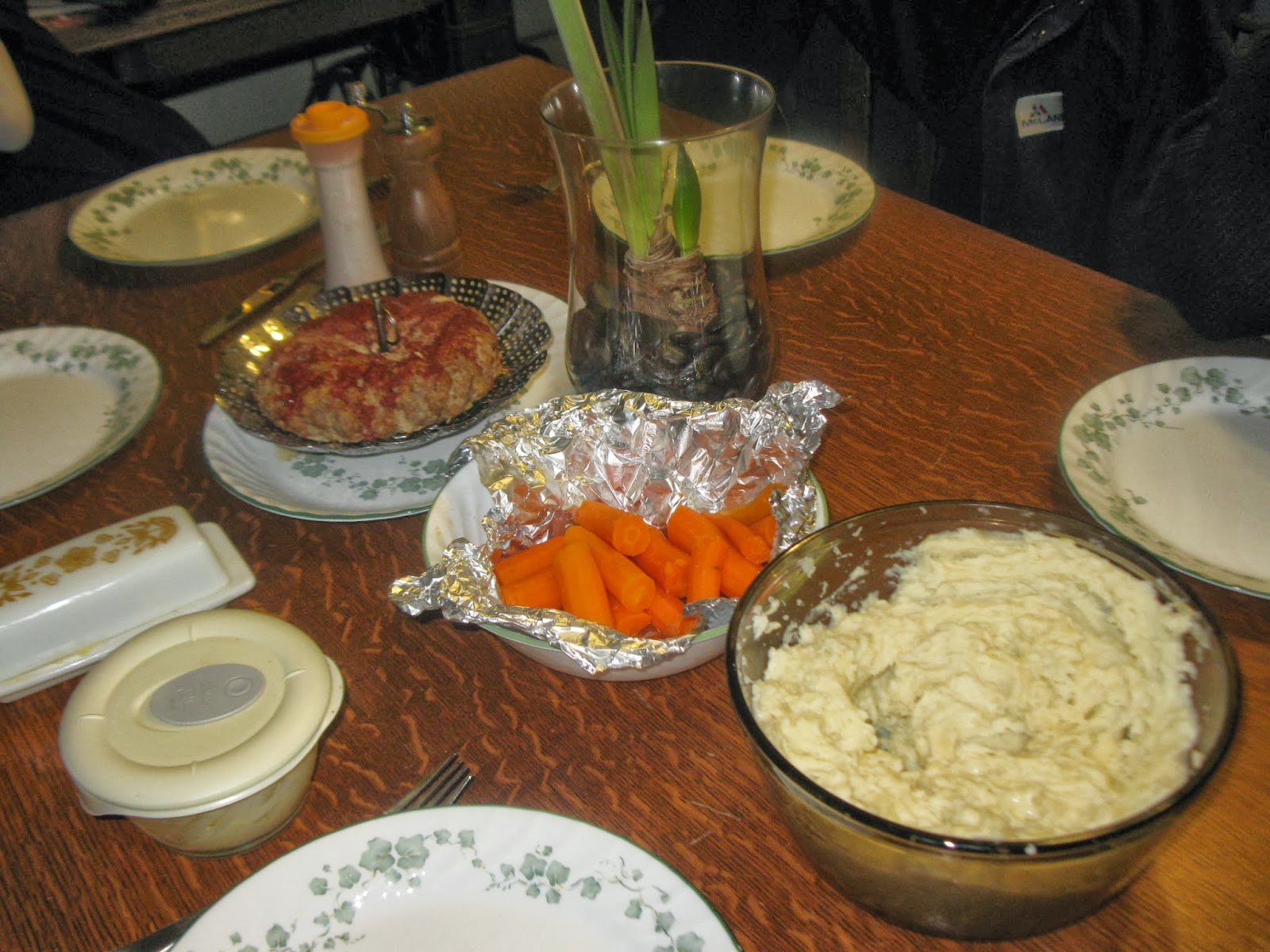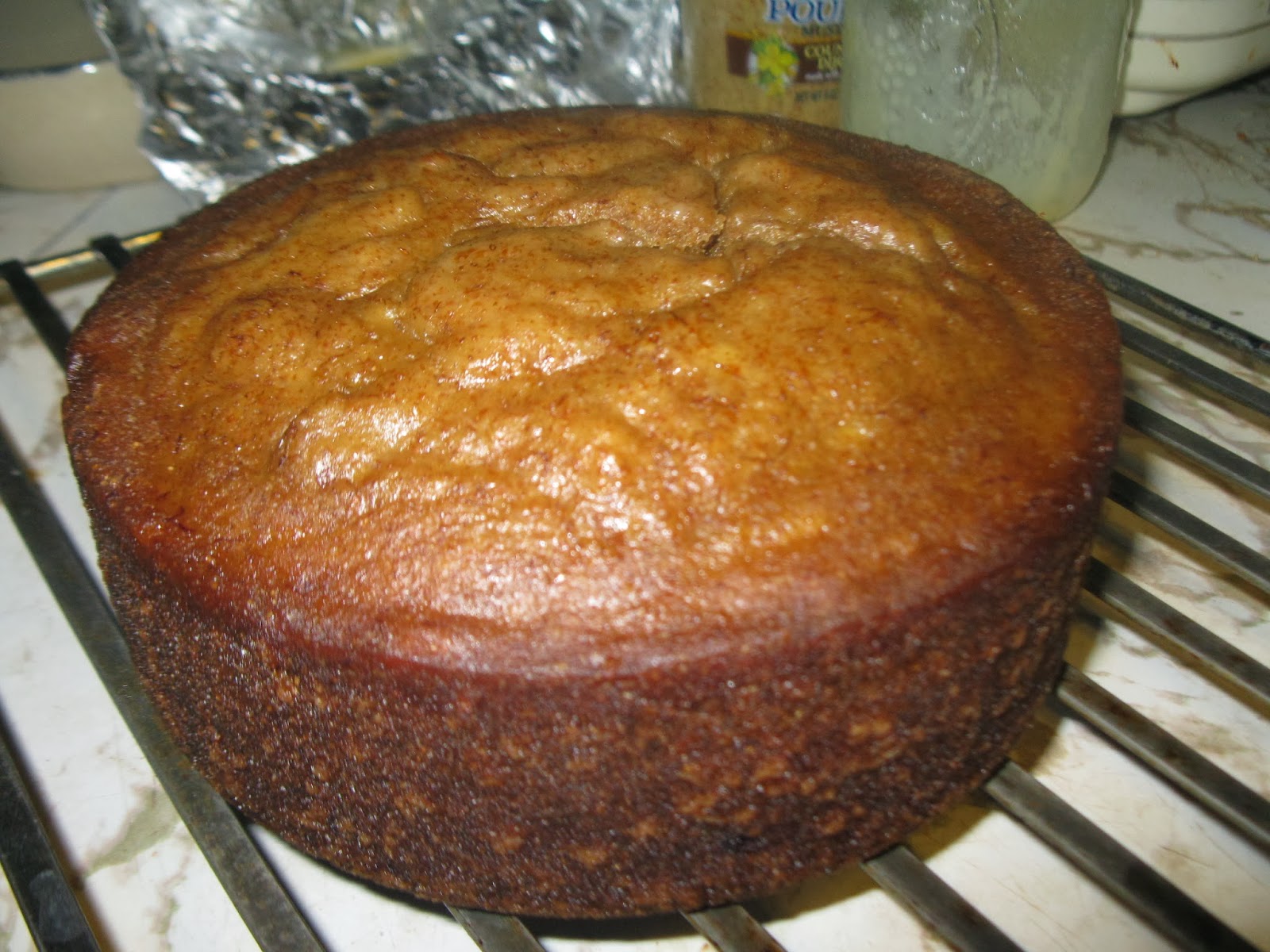In 1976 we were living in rural Nebraska. I loved it there. The neighbors were very kind and that was where I had my first real vegetable garden. Our little girl, April, who was 2-years-old would follow me out to the garden, pick a big ripe tomato and eat it out of hand, saying, over and over "Mato...mato...mato." Of course, the front of her clothing would get a little, *cough*, messy. :)
When we first moved to that house, we did not have a kitchen stove. I cooked on a 2-burner hot plate for quite a while. I had written to a dear old friend and asked her for ideas of things I could cook without an oven. She introduced me to "no-bake oatmeal cookies" and told me how to cook a meatloaf in a pressure cooker.
One day we went to a Sears catalog store. Do any of you know what that is? I don't know if they still exist, but back then, it was a small store with only a few items actually for sale in it, but you could peruse the catalog and order things there. My husband needed to order something, and they happened to have an electric kitchen range on display. It was on sale at the time. I was looking at it, and a store clerk asked if I needed any help. I mentioned to her that I was cooking on a 2-burner hotplate. She asked, "Don't you ever complain??" I don't know what I said, but I was thinking something like, "Why would I complain? I know we don't have money for a stove." When my husband finished his business, he came over and saw me admiring the stove. He then proceeded to buy it for me! Kitchen appliances are the ONLY thing we ever went into debt for. He opened a Sears credit account, put the thing on payments and we had it delivered to our home. Oh, my... that was SO nice. That was the year I learned to can food. It had a self-cleaning oven! I used that stove until 1986 when we moved into a house that had a bigger stove in place. Forgive me while I continue to ramble, please... this is a blog, after all. ;) When we were first married, we lived in a very small mobile home which was married student housing at Indiana University. The kitchen appliances were provided. Then, we moved after I graduated and I was expecting our first child. We lived in the country near Martinsville, Indiana. My husband was a high school Earth Science teacher there. Our landlord offered us an old propane kitchen range which had been stored in a garage. DH completely dismantled it, took out the insulation which mice had invaded, replaced it with new insulation, cleaned it all up nicely and put it back together and into our kitchen. It was great. It had pilot lights. I was already baking all of our bread by that time, so an oven was important to me. Enough about ovens..... for now.
Yesterday I decided to go further along on the path of making breads in a Pressure Cooker. I made
cornbread in it for the first time on Wednesday. Yesterday I baked banana bread and regular whole wheat bread in it with great success! Here is what happened...
I have this nifty little baking container that actually is for use in a crock pot, and it fits nicely, on the trivet, in my 6-quart pressure cooker. I have to remove the lid, though, as it is too tall, but that's fine, since it is necessary to cover any bread you are steaming with aluminum foil tightly.
Mixing the batter...
Here is the banana bread batter poured into the well-buttered pan (recipe follows) ready to go into the pressure cooker.
Trivet and 2 cups of water are in the pressure cooker.
The pan is carefully and tightly covered with foil. I buttered the inside of the foil, just in case, not knowing how high the bread might raise, but as it turned out, that wasn't necessary this time.
Banana bread in pan after cooking:
Here it is cooling on a cooling rack.
Here it is sliced into. Oh, my! It is moist and delicious! We all like it very much. I really think the quality is superior to that baked in a conventional oven, and it also saves energy in the baking process.
Later in the day, I made 5 loaves of whole wheat bread. (Recipe follows.) Here are the balls of dough ready to be shaped into loaves.
I put 4 of the loaves in my regular bread pans and one in the pan for the pressure cooker.
The loaves have risen and are ready to bake.
Cooling on racks after baking... see the pretty round loaf? The pressure cooker worked splendidly!
Here is that loaf, showing the wonderful texture. The bread is not at all soggy, it is nicely browned, but the crust and the crumb are more tender than in the oven-baked bread. I couldn't be more pleased.
Baking breads this way does not save time, but it does save energy and also if you don't happen to have an oven, this would be so nice to know how to do, and you can also bake things easily with a camp stove as well... or a hot plate! Here are the recipes:
Pressure-Cooker Banana Bread (You can easily tweak this recipe for the ingredients you have on hand.)
1/2 cup brown sugar
1/3 cup coconut oil
2 large eggs
3 very ripe bananas, thoroughly mashed
1 3/4 cups whole wheat flour
1 teaspoon baking soda
1/2 teaspoon salt
1/4 cup hot water
Beat the oil and sugar together. Add eggs, mix well. Stir in bananas. Add sifted dry ingredients alternately with hot water. Mix until smooth. Thoroughly coat the inside of your baking vessel with butter. Pour in the batter. You can use a pyrex or metal item, that will fit with plenty of room around it to let the steam circulate. A small taller cake pan would work well. You could even use metal food cans or wide mouth PINT canning jars, but would have to divide the batter into maybe 3 of them and adjust the cooking time accordingly. IF you ever take some bread out of the pressure cooker and it is not done enough, just put it back in and give it a little more time. It works just fine.
After you put the batter in the baking pan, cover it tightly with foil and place it on the trivet with 2 cups of water in the pressure cooker. Put on the lid, bring up to pressure and reduce heat so the petcock is rocking gently. Bake for 35 minutes. Remove from heat and let the pressure escape on its own. Then, open the cooker, take out the pan, take off the foil and let it rest for 10 minutes. Then you can put the banana bread on a wire rack to cool. Wrap tightly and store in the refrigerator. It is tender, sweet, and very nice. Banana bread is sometimes best eaten the next day!
Pressure Cooker Whole Wheat Bread
1 1/4 cup water (110 - 115 degrees F)
1 1/2 teaspoons active dry or instant baking yeast
3 cups whole wheat flour
unbleached flour for kneading
1 1/2 teaspoons salt
2 Tablespoons extra-virgin olive oil
2 Tablespoons blackstrap molasses
Put the whole wheat flour in your bread bowl. Make a well in the center, pour in the warm water and sprinkle the yeast over it. Stir in gently with a fork. Let that sit while you gather your other ingredients. Then add the salt, oil and molasses. Stir together thoroughly. Sprinkle some unbleached flour on your kneading surface and knead vigorously for 10 minutes, sprinkling a little more flour under the dough as you knead to keep it from sticking. Wash and dry the bowl. Grease the bowl with more oil. Put in the dough and turn it over, so the top is oiled. Cover tightly with plastic wrap. Let the dough rise, in a warm place, until when you poke it, it "sighs." If it springs back when you poke it, let it rise some more. Punch down the dough. Re-cover and let it rise again. Shape into a loaf. Place the loaf in the well-buttered baking pan/bowl. Cover tightly with aluminum foil, that has been buttered on the inside. Place on trivet with 2 cups of water in the pressure cooker. Put on the lid. Bring up to pressure and cook, with the petcock gently jiggling, for 30 minutes. Remove from heat and allow the pressure to escape naturally. Remove pan from cooker and put your loaf on a wire rack to cool.























































